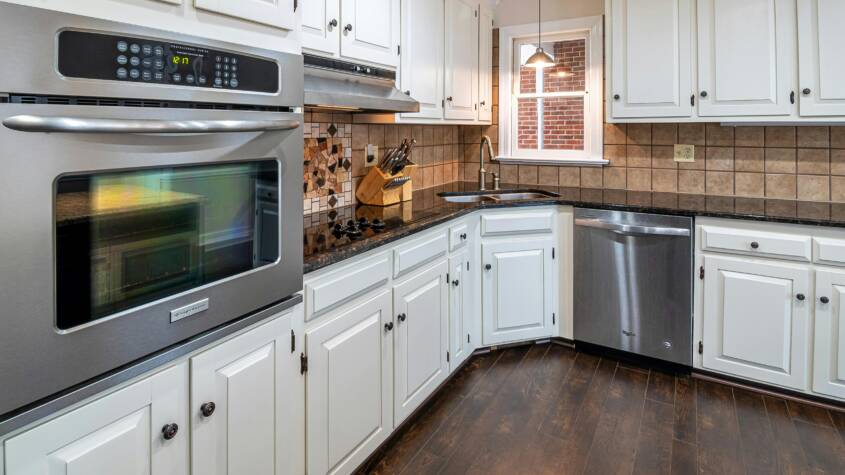
When selecting kitchen cabinets, design plays a crucial role in both aesthetics and functionality. A well-designed kitchen cabinet can enhance the overall look of the space while maximizing storage and organization. High-quality designer kitchen cabinets offer not only style but also durability, making them a worthwhile investment for any homeowner.
Choosing designer cabinets involves understanding the various materials, finishes, and styles available. From modern to traditional designs, there are options that can suit diverse tastes and seamlessly blend into any kitchen theme. Investing in designer cabinets allows homeowners to create a beautiful and personalized space that reflects their unique preferences.
Incorporating designer kitchen cabinets can significantly elevate the kitchen experience. Having the right cabinets can transform an ordinary kitchen into a striking focal point of the home, adding value both functionally and aesthetically.
Design Elements of Designer Kitchen Cabinets
Designer kitchen cabinets feature distinct design elements that encompass material quality, color choices, and hardware selections. Each aspect contributes significantly to the functionality and aesthetic appeal of the kitchen space.
Material Quality and Aesthetics
Material quality plays a crucial role in the design of kitchen cabinets. Premium options often include solid wood, plywood, and high-density fiberboard (HDF). Solid wood provides durability and natural beauty, while plywood offers a balance of strength and cost-effectiveness.
Aesthetics extend beyond material choice. Textures, patterns, and grain finishes can transform the look of cabinets. For instance, reclaimed wood gives a rustic feel, while smooth lacquered surfaces add a modern touch. Buyers should consider the integration of materials with their overall kitchen design.
Color Schemes and Finishes
Color schemes in designer cabinets can dramatically influence the kitchen’s ambiance. Shades like deep navy, soft gray, or classic white are popular choices. Each color can either stand out or blend seamlessly depending on personal taste and the overall interior style.
Finishes also enhance visual appeal. Matte, glossy, or satin finishes showcase different textures and reflectivity levels. For a cohesive look, cabinets should complement countertops and backsplashes. Choosing the right colors and finishes elevates both style and function.
Hardware Choices
Hardware selections are essential for both practicality and visual impact. Knobs, pulls, and hinges come in various designs, materials, and finishes. Options range from sleek stainless steel to ornate antique brass.
The choice of hardware should complement cabinet design and function. For minimalist aesthetics, simple pulls may suffice, while decorative knobs can enhance traditional styles. Combining different hardware styles can create a unique look, allowing creative freedom in design.
Planning and Installation Considerations
Effective planning and installation are crucial for achieving optimal functionality and aesthetics in designer kitchen cabinets. Careful measurement, customization preferences, and installation choices are key factors that influence the overall outcome.
Measuring and Space Planning
Accurate measurements are the foundation of any successful kitchen cabinet project. It is essential to measure the height, width, and depth of the space designated for cabinets. This should also include doorways, windows, and any architectural features that could affect cabinet placement.
Using a tape measure and graph paper can help visualize the layout. Consider ceiling height, as taller cabinets can maximize vertical space. Account for clearance around appliances and ensure adequate workspace.
A well-planned layout enhances accessibility and usability. Including a work triangle concept—where the sink, stove, and refrigerator are arranged efficiently—promotes easy movement within the kitchen.
Customization Options
Customization plays a significant role in achieving the desired look and functionality of kitchen cabinets. Homeowners can choose materials, finishes, and hardware that align with their personal style.
Popular materials include wood, laminate, and metal. Finishes range from natural stains to high-gloss paint, influencing the kitchen’s overall vibe. Hardware selections, such as handles and knobs, also contribute to the cabinets’ aesthetic.
Custom features like pull-out shelves, lazy Susans, and integrated lighting can improve organization and usability. Assessing individual needs will guide customization choices that enhance daily kitchen activities.
Professional Installation vs. DIY
Choosing between professional installation and DIY depends on skill level and project complexity. Professional installers bring expertise, ensuring that cabinets are mounted correctly and aligned properly. This often includes making necessary adjustments during the process.
On the other hand, DIY installation can save costs but demands considerable time and effort. It may also require specific tools and skills. DIYers should follow detailed instructions and use quality supplies to avoid future issues.
Consulting with a specialist before making a decision can provide valuable insights. Thus, understanding the advantages of each option helps in making informed choices that suit individual circumstances.
How Experts in SEO Service in India Utilize Data Analytics for Predictive SEO Strategies
Though it sounds like a large and complex term, data analytics is basically only a means o…










